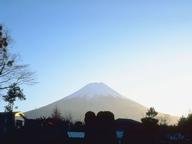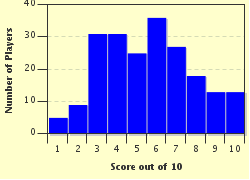Quiz Answer Key and Fun Facts
1. A supervolcano is a type of volcano. But what is it about supervolcanoes that make them so 'super'?
2. What is created after a catastrophic eruption of a supervolcano?
3. There are several volcanic areas in the world considered to be supervolcanoes. Which of the following is a supervolcano?
4. Only once or twice in every million years is there a supervolcanic eruption big enough to create a caldera. Which supervolcano, located in Sumatra, Indonesia, had this type of eruption 75,000 years ago?
5. Yellowstone erupts once about every 660,000 to 800,000 years. It's last eruption was around 640,000 years ago. What type of eruption do scientists believe is likely to happen next time it erupts?
6. Supervolcanic areas, such as Yellowstone, are under immense pressure. Scientifically speaking, is it possible to alleviate some of this pressure and thus lower the risk of an eruption?
7. If a supervolcano were to erupt in modern times, and it is not a catastrophic eruption (thus just a normal volcanic eruption), which of the following would be the most likely to happen?
8. There is a catastrophe theory linked to an eruption of a supervolcano. This theory, though widely debated, says that there was a dramatic loss of human life because of the eruption and everyone is genetically descended from the mere few thousands who managed to survive this event. Which supervolcano erupted?
9. There are hundreds of known supervolcanoes in the world.
10. This quiz has been about supervolcanoes, a term that was brought to public attention in 2000 by which BBC science based program?
Source: Author
Vesuvius79
This quiz was reviewed by FunTrivia editor
crisw before going online.
Any errors found in FunTrivia content are routinely corrected through our feedback system.

